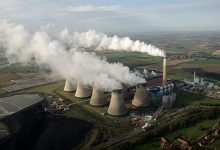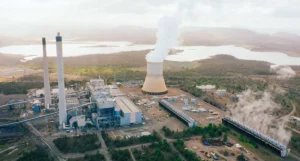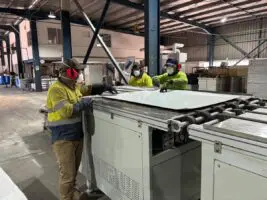In 2006, The Australian published an article touting “green power for the future”. No, it wasn’t renewables – it was about what was widely described back then as “clean coal technologies”. “There is no reason why by 2020 we can’t be putting a quarter of our emissions from coal and gas back into the ground, and no reason why by 2030 it wouldn’t be about half”, said then chief executive of the “Australian Coal Association” (now, the Minerals Council) Mark O’Niell.
Well, we’re near the end of 2020, and the Global CCS institute has just released its 2020 report. “CCS facilities currently in operation can capture and permanently store around 40 Mt of CO2 every year”, they write. In 2020, global emissions will probably be around 30.6 gigatonnes of CO2, of which approximately 20 GT will be only coal and gas emissions (using 2018 estimates to guess proportions). So how far away is that from a quarter?
That’s an extremely generous estimate, because the 2020 GCCS report include carbon capture from oil, too, and doesn’t split it out. And of course, other greenhouse gases, like methane and nitrous oxide, aren’t included in this at all, nor are dangerous pollutants. Another curious insight from the report – for most of the past decade, the total operational installed capacity of CCS grew very, very slightly, while the ‘coming’ pipeline of CCS actually fell. The GCCS report puts this down to “public and private sector focus on short term recovery after the global financial crisis”, instead of any meaningful insight about the nature of the technology and the intent of its investors. Regardless, it gives us good reason to treat that blue layer with plenty of skepticism. I mean, we are going to be spending another few years recovering from an even bigger crisis.
It’s timely, given The Australian’s ‘special reports’ on coal, released only one day after the new global CCS institute report. That series is filled with promotion of coal, and includes an article entitled ” Nation switches on to carbon capture”. “Carbon capture and storage (CCS) projects in Australia are switching on, as the nation looks to the technology to cut its emissions and meet international climate change commitments”, writes The Australian.
News Corp: we don't deny climate change
Also News Corp: here is an eight page 'special report' on how great coal is. pic.twitter.com/kkYd8XnyDO
— Michael Mazengarb (@MichaelM_ACT) December 3, 2020
The GCCS complains, in the article, that the growth of the industry is badly off track. “Despite recent project start-ups and a series of projects under development, CCUS in industry and fuel transformation is not on track to reach the Sustainable Development Scenario (SDS) level of 450 Mtpa by 2030”.
It’s a notable moment in the context of the history of predictions of renewable energy growth, most of which have badly underestimated the rapid drops in cost and the growth in capacity around the world. News Corp’s media outlets played a major role in spreading doubt and talking down renewable energy back, too. “If there is to be a new beginning in global energy, the golden age is unlikely to be powered directly by the wind or sun. Despite high hopes for renewables, the figures show the world to be on the cusp of another fossil fuel boom”, wrote the paper’s Graham Lloyd, in 2012. Only eight years later, the IEA has announced that solar is the new ‘king‘ of energy, and coal has begun, inarguably, a terminal phase. In 2030, it will be pretty fun to revisit today’s predictions, and see exactly how wrong they were.
Updated 07/12/2020 10:40 CEST to add in an extra chart from the GCCS report










